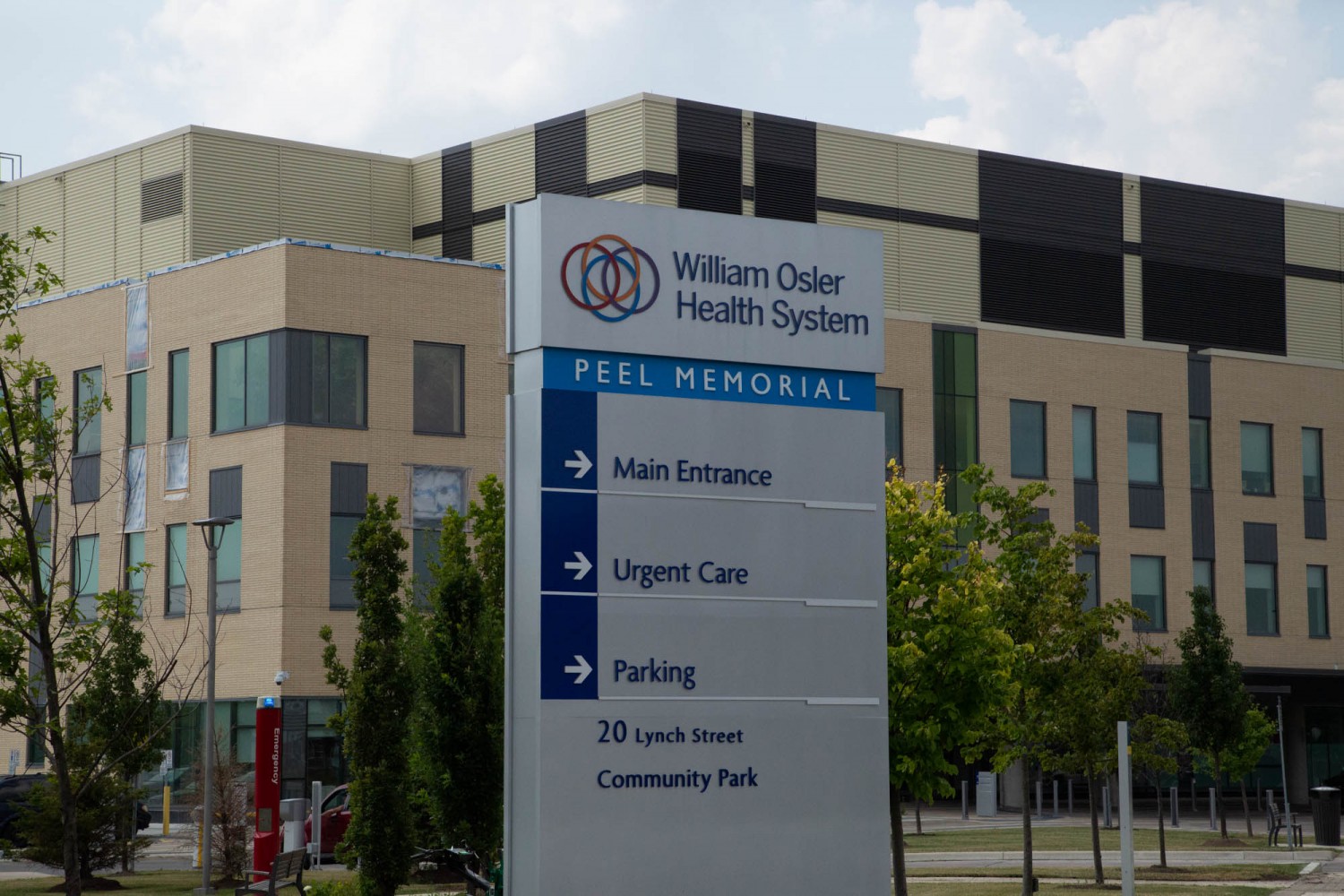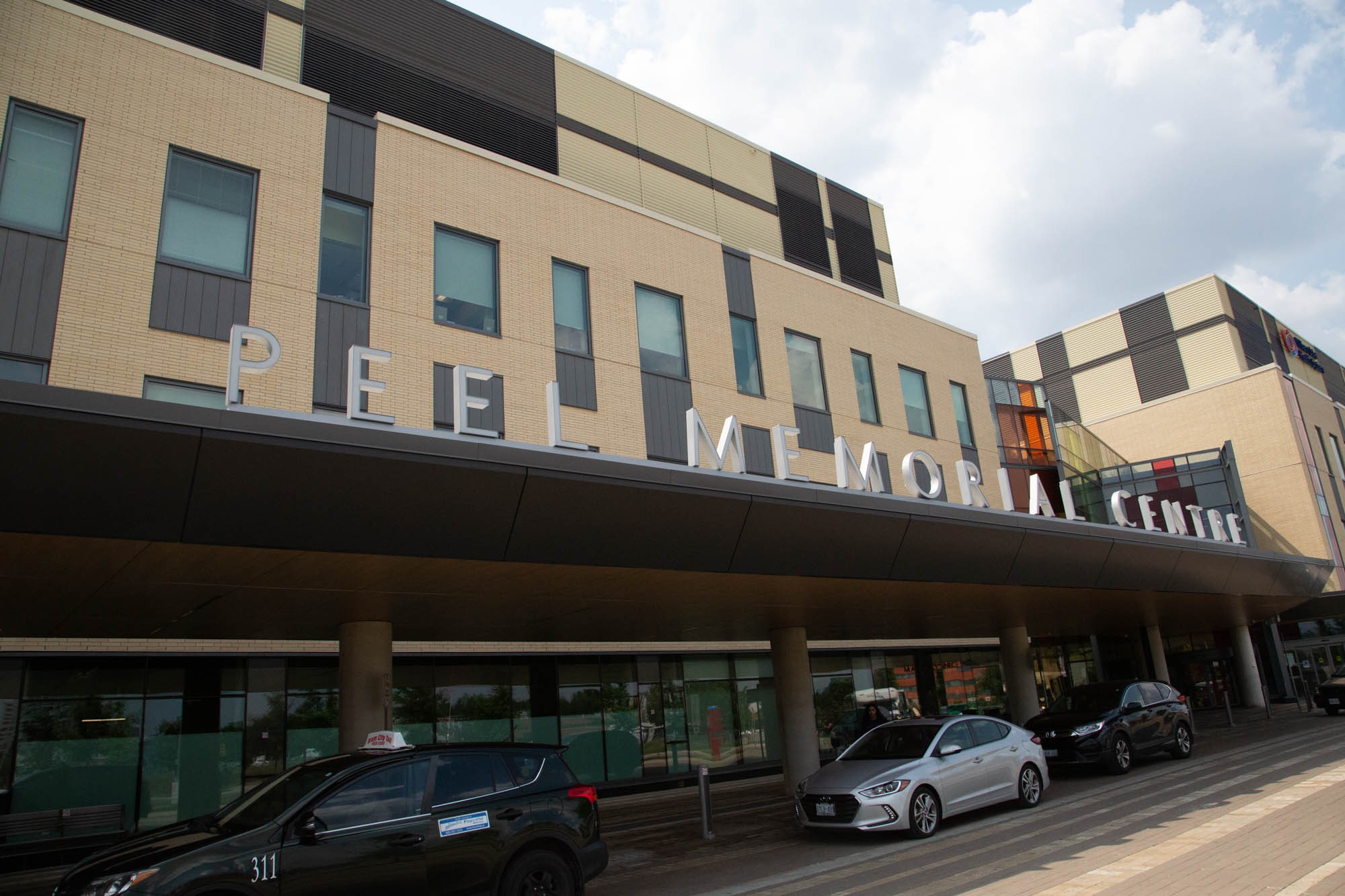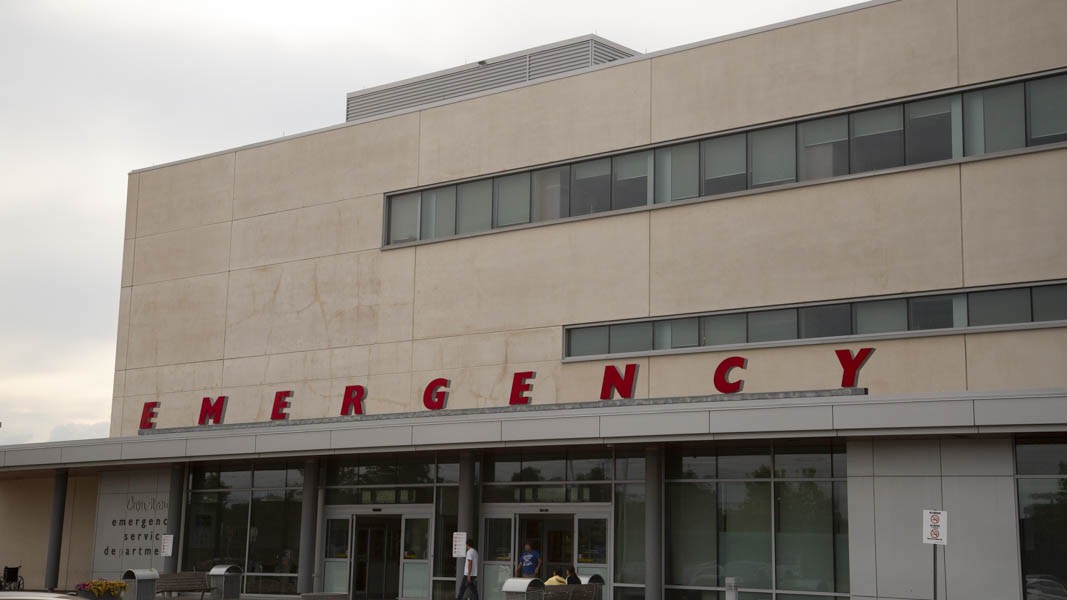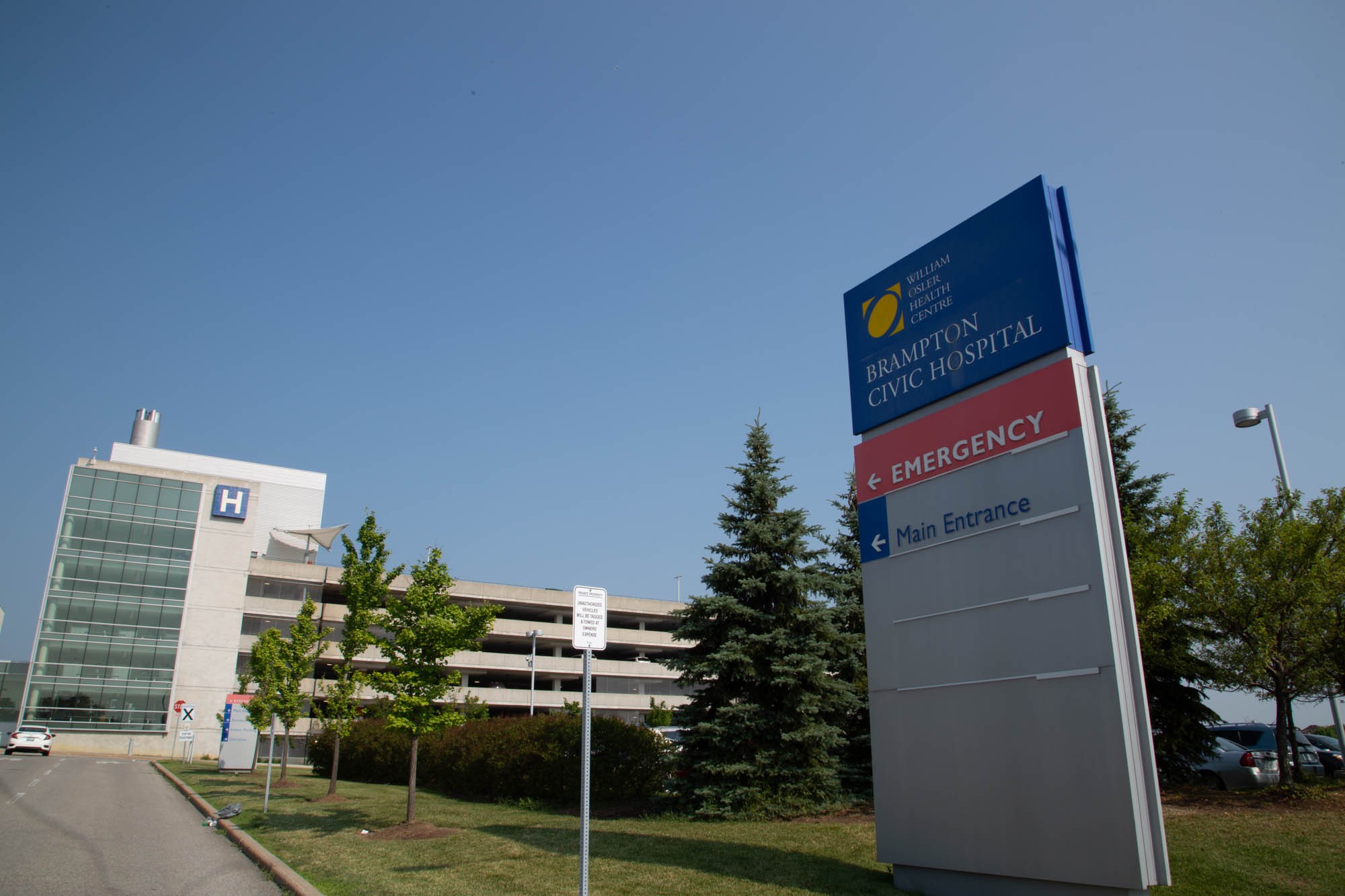
With new hospital years away, $20 million funded by Brampton taxpayers sits on a shelf
Poor planning and a lack of action on Brampton’s healthcare crisis have not only led to thousands of local residents being treated in the hallways of Brampton Civic Hospital, but millions in taxpayer dollars set aside for a new healthcare facility are currently sitting in a reserve account, depreciating in value as the years of planning drag on.
The city’s healthcare crisis has been at the forefront of the debate on hallway healthcare for years. However, while a lot of noise was being made, it doesn’t appear that much planning was happening to alleviate the burden on local hospitals. A new facility is still five to eight years away says the William Osler Health System, and many residents aren’t happy about it.
“It’s not acceptable. It took the same amount of years to get to this point with nothing,” says Chris Bejnar, chair of the advocacy group Citizens for a Better Brampton (CFBB). “Someone has dropped the ball here.”

Bejnar points the finger directly at Osler, accusing senior staff of being more concerned with preserving their jobs than pushing the province for action.
“What has the executive team at WOHC been doing for the last 5 years? So many at WOHC earn exorbitant salaries yet so little work to show? They have been all afraid to publicly advocate so they don’t lose their cushy jobs and high pay,” he says.
Another issue is the loss of Osler’s CEO, Dr. Brendan Carr, who is stepping down to start a new job in Nova Scotia next month. Finding a replacement and allowing the new CEO time to oversee next steps, will only delay an already stalled process. It’s unclear if his coming departure has caused further delays in the already late submission of the phase-II plan, which a new CEO will have to oversee immediately after someone is hired to lead the organization.
The Pointer recently reported that Phase II of Peel Memorial, which will expand the facility into a full service hospital including patient beds — Peel Memorial currently has no beds, operating as an out-patient facility — is in the planning phases.
Cara Francis, head of public relations for William Osler, said this process is “well underway” and an initial proposal is scheduled to be presented to the Ministry of Health in early 2020. Following that submission, further detailed planning will need to take place with the ministry. She warned Brampton residents not to expect doors to open for at least five to eight years, and that’s if there are no unexpected delays on top of that drawn out timeline.
The province told The Pointer that Osler was given $500,000 in one-time grant funding in early 2018 to assist with this planning process. However, in August, it was the understanding of the health ministry that the initial Stage 1 proposal would be submitted by this fall. It’s unclear what has caused the delay and why Osler only plans to get its submission for the plan to the ministry about two years after receiving the grant to help get it done.
It’s also unclear why, with the city facing such a desperate situation, Osler has not been able to move forward with its work to get the second phase shovel-ready, while plans in other cities have been expedited by their health networks over the past few years.
Osler’s own Etobicoke General Hospital in Toronto recently completed a $300 million renovation which Toronto taxpayers did not have to pay any type of levy for.
In the meantime, Brampton’s healthcare facilities will continue to be packed to capacity, especially as the city braces for winter and the annual cold and flu season.
Data obtained by the provincial NDP and released last month showed that Brampton Civic, the city’s lone full-service hospital, has been operating at 101 percent to 106 percent capacity for all of 2019, well beyond the recommended standard of care of 85 percent capacity. Peel Memorial, started the year operating at 557 percent capacity, a number that increased to 587 percent in April and continued into June, the last month for which data was provided by Osler.

Bejnar says that if the province had listened to residents initially, they would have built a full-service hospital in the place of Peel Memorial, instead of building the project in phases, starting with an out-patient preventative-care facility, something he says has wasted millions in taxpayers’ dollars. Bejnar says that ahead of construction CFBB met with Olser and Infrastructure Ontario to discuss the project.
“Basically we said what you’re proposing here is not adequate for what we need and they just wouldn’t listen,” he says. “In a nutshell, MOH didn’t want to spend the money on Brampton; (Peel Memorial) was built to shut us up for a while, not what was needed.”
Additionally, Brampton council, in 2013, approved a new tax levy to help raise money for Peel Memorial. The fund raised $60 million, $40 million of which went to Phase I and was given to Osler in 2016, the additional money is currently sitting in city coffers, likely earning some interest through whatever safe, fixed-investment instrument finance staff put it in.
“The remaining $20 million has been placed in reserve and will be transferred for substantial completion of Phase 2. Terms of the Memorandum of Understanding are valid until December 31, 2030,” a city spokesperson told The Pointer in an emailed response.
Having the money set aside is prudent, however, with each passing year, that $20 million will be able to buy less and less, even if it is collecting a small annual interest. Over the last year alone, construction costs in Ontario have increased five percent, so what that $20 million will be able to buy in 2025 will be a lot less than what it would have been able to get in 2016.
“William Osler, by sitting on their asses, have eroded the purchasing power of our money,” Bejnar says. “We need action now, not 5-8 years from now. By then our population will be 750,000 and we will still have one ER and only 608 beds. Show me another Canadian city with such a poor ratio.”
Early plans for Phase II projected a tower expansion on the existing site of Peel Memorial and could offer crucially needed services to residents. New services are projected to be geared toward easing the transition from hospital back to the home, as well as managing chronic diseases, both of which could ease the burden on the city's two swamped emergency departments.
Peel Memorial does not have a full-service emergency (urgent care) department and it is only open from 8 a.m. to 9 p.m. every day, while Brampton Civic operates a full-service urgent care department that is open around the clock.

Phase II would see the facility remain open 24/7 and a tower expansion would bring 200 more patient beds to Brampton.
However, even with 200 more beds, it would not be enough to bring Brampton up to the provincial average of beds per capita. Of all the local hospital systems across the province, as of last year, Brampton’s received the lowest amount of per capita funding, with less than one hospital bed per 1,000 residents, well below half the provincial average and about a third of the national average of approximately 2.7 beds for every 1,000 residents.
Brampton currently needs two more facilities in order to meet the growing demand from an aging and increasing population. And it would probably need a third new in-patient hospital by the time those are built, if population increase continues at the current rate of approximately 14,000 each year. Osler says there has been no substantial work done to bring a third hospital to Brampton.
For now, Bejnar says that Osler and the city should focus on what’s in front of them, as it’s unrealistic to think the healthcare network could plan for a third hospital when it can’t even get plans for a second full-service facility into the province on time.
“Everyone needs to stop talking about a third hospital for Brampton and focus on the cheapest and quickest way to get Brampton better healthcare. Finish what was started at Peel Memorial,” he says.
“The City continues to work closely with the William Osler Health System to support any development work and advocate for strong healthcare for Brampton residents,” the city stated in an emailed response. “The current focus is the development of Phase 2 at the Peel Memorial Centre.”
That might be the focus, but Bejnar and others say Osler has failed to take action for too long.
Email: [email protected]
Twitter: @JoeljWittnebel
Submit a correction about this story


